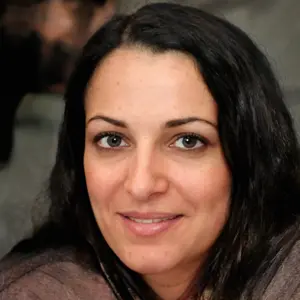9 Best Water Intake Tracking Apps and Strategies

Written by
Natalie Hamilton
Reviewed by
Prof. Benjamin Murphy, Ph.D.Tracking one's water intake greatly enhances cognitive ability and physical capacity.
Using factors such as your weight, geographical climate, and activity levels, personalized hydration goals will be made.
Mobile apps like WaterMinder engage users in tracking water intake through reminders and data displays.
Urine color monitoring provides an inexpensive, no-tech approach to instant hydration feedback.
Addressing the challenges of tracking water intake will often require rethinking habits and flavor variety.
You can stay hydrated and motivated while also avoiding the very real dangers of dehydration while enhancing metabolic efficiency.
Article Navigation
Correct water intake tracking has a direct effect on mental acuity and physical stamina. Studies show that even mild dehydration decreases mental concentration by 15%. I myself have seen afternoon fatigue disappear after monitoring my hydration. Consistent tracking also helps ensure your water intake meets your daily goals.
Busy schedules often sabotage our hydration efforts. I would frequently forget to drink water for hours at a time, preoccupied with meetings and deadlines. Solutions exist that are not limited to applications. Try using bottles that are marked with reminders to hydrate at specific times. Whatever works to help you reach your hydration goals is the key, and whatever that is will be what is sustainable for the long term.
Why Track Your Water Intake
If you neglect tracking your water intake, then headaches and fatigue in the afternoon are likely. Dehydration causes less blood to flow to your brain. I have seen clients drastically improve their energy levels simply by tracking their fluid intake. Keeping track of fluids consistently prevents these problems and keeps your fluid balance normal.
Your physical endurance increases greatly with proper hydration. The muscles function better when they are properly hydrated. Someone who has recorded their water intake has 30% more endurance in exercise than someone who guesses how much they require. Their energies often come to a standstill. Dehydration prevents you from storing energy.
Mental acuity is enhanced by proper hydration. Even mild dehydration can cause a lack of focus. Monitoring changed guessing into measurable actions. My clients who monitor their intake solve problems more quickly than those who don't. Within days of starting, you will notice a sharper focus.
Cognitive Performance Enhancement
- Proper hydration significantly improves focus and concentration abilities
- Memory recall capabilities improve when maintaining optimal hydration levels
- Decision-making becomes more efficient with consistent water intake tracking
Physical Health Maintenance
- Kidney function improves with consistent hydration reducing potential health risks
- Joint lubrication increases mobility particularly for active individuals
- Skin elasticity improves showing visible results within 21 days of tracking
Metabolic Efficiency Boost
- Metabolism improves with adequate water consumption supporting weight management
- Nutrient transportation efficiency enhances cellular absorption throughout the body
- Waste elimination accelerates helping maintain optimal digestive system function
Energy Level Regulation
- Fatigue decreases substantially when maintaining personalized hydration targets
- Physical endurance increases allowing longer activity sessions without exhaustion
- Circadian rhythm stabilizes improving both daytime energy and nighttime sleep
Habit Formation Support
- Tracking builds daily routines that reinforce healthy behaviors over time
- Visual progress indicators in apps provide positive reinforcement for consistency
- Accountability features help maintain hydration habits during schedule changes
How Much Water Do You Need
Your daily dosage differs a lot depending on what sort of organism you are. For example, the average adult man requires a minimum of 3.7 liters (125 fluid ounces), and each woman needs a minimum of 2.7 liters (91 fluid ounces). Women who are pregnant and older people have special liquid requirements of their own. I put mine about where they belong according to these standards.
The weather drastically affects the need for fluids. Above approximately 90 degrees (32 degrees C), one needs at least 20-30% more fluids due to heat. With high humidity and altitude, the need increases, with some feeling a drastic rise in need. In Arizona summers, I always carry more fluids than I need. The heat forces the calculations of fluids upward, as a matter of fact.
Intensity and amount of exercise dictate precise adjustments. Moderate exercise, such as walking or jogging, calls for fluid increases of 12-16 fl oz (350-470 ml) per hour. Moderate exercise, such as jogging, requires an additional 20-24 fl oz (590-710 ml) of fluids per hour. For marathon training purposes, I log the volume of fluids taken hourly. Your hydration calculation must be in proportion to the exercise intensities and duration.
Adapt your approach using these considerations. Water baseline needs must be paired with adjustments for climate and activity. Clients who accurately track their water intake are more likely to avoid the consequences of dehydration. You will be amazed by how precise hydration tracking can change your health outcomes. Precise tracking will always outperform guessing.
Climate Conditions
- Hot environments (above 90°F (32°C)) increase needs by 20-30%
- High humidity accelerates fluid loss through perspiration
- Altitude above 8,000 ft (2,400 m) requires additional hydration
Physical Activity
- Light exercise: Add 12-16 fl oz (350-470 ml) per hour
- Moderate training: Add 20-24 fl oz (590-710 ml) per hour
- Intense workouts: Add 28-32 fl oz (830-950 ml) per hour
Health Status
- Illnesses with fever increase baseline needs by 25-40%
- Pregnancy requires additional fluid for fetal development
- Certain medications like diuretics affect hydration balance
Dietary Influences
- High-protein diets require extra water for metabolism
- Sodium-rich foods increase thirst signals and fluid needs
- Caffeinated beverages contribute partially to daily intake
Age Considerations
- Children need 5-8 cups daily (1.2-1.9 liters) depending on age
- Teens have hydration needs similar to adults during growth spurts
- Seniors often experience diminished thirst signals requiring conscious tracking
Setting Your Hydration Goal
To begin your personalized hydration plan, it is important that all calculations are based on your weight. In other words, divide your weight in pounds by two to determine the daily ounces of need. For example, if you weigh 150 pounds, you will need 75 fl oz or 2.2 liters, as a baseline. If you use metric units, multiply kg by .033 instead. I use this method with all my clients.
Activity adjustments refine your fluid targets. Sedentary lifestyles maintain baseline goals. Moderately, people defensively add 20% to their total. Athletes may indeed require 30-40% more energy during periods of intense activity. For hiking trips, I increase my daily water intake by a full liter.
Apps facilitate goal adjustment for unique situations. WaterMinder's flight feature adds 8 fl oz (240 ml) every hour during a flight. HidrateSpark travel modes temporarily reduce goals. When traveling to humid locations, I turn these features on immediately.
Monitoring urine color provides immediate responses. Light yellow indicates good hydration. Dark yellow means you should drink an additional 10-15%. Clear urine indicates you are overhydrated. Each morning, I check mine to help calibrate fluid targets for the day without relying on guesswork.
Weight-Based Formula
- Standard method: Weight in pounds ÷ 2 = Daily ounces
- Metric alternative: Weight in kg x 0.033 = Daily liters
- Example: 150 lbs person needs 75 fl oz (2.2 liters)
- Adjustment: Add 12-16 fl oz (350-470 ml) per exercise hour
Activity Level Adjustment
- Sedentary: Maintain baseline calculation
- Moderately active: Add 20% to baseline goal
- Highly active: Add 30-40% to baseline goal
- Athletes: Use sweat rate tests for precise targets
App-Assisted Calculation
- WaterMinder: Inputs weight, climate, activity for custom goal
- Waterllama: Adjusts for weather and tracks beverage types
- Hydro Coach: Pregnancy/breastfeeding presets
- Sync with wearables for real-time adjustments
Urine Color Monitoring
- Pale yellow indicates proper hydration
- Dark yellow suggests increasing intake by 10-15%
- Clear urine may signal overhydration
- Use morning urine as baseline reference
Thirst Response Tuning
- Note thirst frequency throughout day
- Goal: Experience thirst 4-5 times daily
- Reduce intake if constantly thirsty
- Increase if rarely thirsty
Best Apps for Water Tracking
Waterllama is unique in tracking hydration based on weather conditions. Its gamified challenges promote consistent logging of intake. The caffeine tracking feature is a great asset for workdays. The integration with the Apple Watch makes it easy to view reminders on the wrist, and it's the best app for me!
WaterMinder's data visualization is second to none, with elaborate hydration history charts. Custom cup sizes accommodate any container. Achievement badges celebrate streaks and motivate clients. Apple Health integration automatically creates comprehensive wellness reports.
HidrateSpark offers distinctive integration with a smart bottle feature, enabling fully automated intake logging within the app. Sensors automatically record drinks and update goals in real time. Android users will also be able to experience the level of automation through Waterful. This completely removes the manual tracking undertaking.
Platform compatibility is key to a seamless water reminder system. Waterllama is iOS-only, Waterful is Android-only, and WaterMinder and HidrateSpark are compatible with both iOS and Android. My recommendation is to choose the one that works best with your current devices.
Reminder Systems
- Customizable notification schedules based on daily routines
- Snooze options for flexible hydration management
- Wearable device integration (Apple Watch alerts)
Goal Customization
- Weight/activity-based calculations with manual overrides
- Weather-based automatic adjustments (+20-30% in heat)
- Temporary goal settings for travel/special events
Data Visualization
- Daily/weekly/monthly hydration history charts
- Progress toward goal percentage indicators
- Exportable reports for health consultations
Beverage Tracking
- Pre-set drink database (water, coffee, tea, juice)
- Custom drink creation with hydration impact values
- Caffeine/alcohol intake monitoring
Motivation Tools
- Achievement badges and streaks for consistency
- Shareable progress reports with friends
- Virtual companions (Watercat) or plant growth (Plant Nanny)
Overcoming Common Challenges
Failing to track drinking is a common tracking barrier. Try using Apple Watch complications to make it easy to enter one-tap drinks. WaterMinder's custom buttons help me work hard during busy workdays. Physical notes on or by sinks give me good reminder hooks that are worth trying. These solution strategies provide hydration consistency with minimum effort.
Fight water boredom by mixing up flavors. Track herbal teas as valid hydration in Waterllama, etc. I rotate through a week of infusions with lemon, cucumber, and mint. This variety stops the boredom and enhances your hydration consistency goals without resorting to sugary alternatives.
Changing schedules requires flexible solutions. Set flexible default goals in Waterful for unexpected days. I maintain a minimum intake goal regardless of interruptions. Sync apps across devices so you can adjust anywhere at any time.
Travel unpredictability warrants an element of forethought. Use WaterMinder's vacation mode to adjust your goals temporarily. I include collapsible measured bottles in my packing for flights. These strategies convert tracking challenges into acceptable habits during trips.
Forgetting to Log Drinks
- Problem: Distractions cause missed entries throughout the day
- Solution: Enable Apple Watch complications for one-tap logging
- Implementation: WaterMinder watch app with customizable buttons
- Prevention: Place physical reminder notes near common drinking locations
Water Boredom
- Problem: Monotony reduces motivation to maintain hydration goals
- Solution: Track infused waters and herbal teas as valid alternatives
- Implementation: Create custom beverages in Waterllama app
- Strategy: Rotate between 3-5 different flavors weekly to maintain interest
Inconsistent Routines
- Problem: Changing schedules disrupt established hydration habits
- Solution: Set adaptable 'default' goals for unpredictable days
- Implementation: Waterful's flexible reminder rescheduling feature
- Strategy: Maintain minimum intake threshold regardless of schedule changes
Travel Disruptions
- Problem: Time zone changes and travel routines hinder tracking
- Solution: Use temporary travel presets in hydration apps
- Implementation: WaterMinder's vacation mode with reduced goals
- Strategy: Pack portable tracking tools like collapsible measured bottles
App Overload
- Problem: Multiple health apps create tracking fatigue
- Solution: Centralize data through HealthKit integration
- Implementation: Sync Waterllama with Apple Health dashboard
- Strategy: Designate one primary hydration app to minimize switching
5 Common Myths
All beverages hydrate equally well, so drinking soda is just as effective as water for meeting daily needs.
Water remains the most efficient hydrator because it's absorbed directly without metabolic processing. Sugary drinks like soda slow absorption due to their high osmotic load, while caffeinated beverages cause mild diuretic effects that reduce net hydration. Electrolyte-enhanced drinks only outperform water in extreme scenarios like endurance sports.
The feeling of thirst implies that one is already in a dehydrated state, and it is essential to be drinking continually to prevent thirst.
Thirst is simply a normal physiological signal resulting from a 1-2% body fluid reduction, and not an indicator of any dehydration. Serious dehydration precedes several symptoms such as dizziness and dark urine. Drinking when thirsty only is the true and correct method of maintaining proper body-fluid equilibria, while drinking too much gives rise to dilution of the important electrolytes, soaking sodium and potassium.
Everyone, regardless of size or activity level, needs exactly eight glasses of water daily.
Since the amount of water necessary depends on weight, climate, and activity gratification can vary greatly. For example, a sedentary person weighing 120 pounds will probably need only about 6 cups of water, while a 200-pound athlete at work in the heat could need 12 cups or more. Individual differences in need arise not only from these factors but also from pregnancy, nursing, and certain medications which modify the requirements far beyond this generalization.
Clear urine always signifies excellent hydration, so always aim for an output that is completely colorless.
Pale yellow urine is an indication of ideal hydration, while completely clear urine is a sign of over hydration, and dilution of essential electrolytes. Continually clear urine can be a symptom of hyponatremia, a dangerous deficiency of sodium. Dark yellow urine indicates dehydration, but also many vitamins and medications will naturally darken the color of your urine.
Coffee should not be counted toward your daily water intake as caffeine acts as a diuretic and it dehydrates you.
Moderate consumption of caffeine (3--4 cups per day) is diuretic so that there is a net hydration after all (fluids taken in exceed mild diuresis). Caffeine increases the amount of urine produced temporarily, but because of the size of the liquid taken in, it does not remove more liquids than the drink has in it. Coffee gives a great amount of daily hydration unless it is drunk in excessive amounts.
Conclusion
Consistent hydration logging changes your daily levels of energy and focus dramatically. I have seen clients overcome chronic fatigue by simply monitoring intake. This action causes a ripple effect that increases work productivity and workout performance. You receive numerous benefits for your overall wellness.
Adhering to personal hydration goals prevents future concerns like kidney fatigue. Proper hydration balances fluids, supports the health of organs, and maintains metabolic function. Clients report a decrease in headache symptoms and improved digestion within weeks. This fuses into a lasting benefit of vitality and wellness.
Get started today with one simple trick. Download Waterllama or use a marked bottle. I started with phone reminders on the busiest days in the clinic. Quick, consistent habits build indestructible hydration habits more quickly than perfect ones can.
Imagine reaching your daily goals effortlessly in a matter of weeks. Feel the difference in your alertness and skin quality. You will make drinking enough water second nature, like breathing. My own experience proves that sustainable change is, in fact, just that first measured sip today.
External Sources
Frequently Asked Questions
What's the most effective way to track daily water intake?
Use apps with customization features like WaterMinder or HidrateSpark that sync with wearables. Alternatively, manual tracking using marked bottles or urine color monitoring provides reliable hydration feedback without technology.
Do smart water bottles accurately track hydration?
Yes, smart bottles like HidrateSpark automatically log intake via sensors and sync with apps. They're ideal for tech enthusiasts but traditional measured bottles offer affordable alternatives for basic tracking needs.
Is tracking water consumption beneficial for health?
Absolutely, consistent tracking prevents dehydration symptoms like fatigue and headaches. It also optimizes physical performance, kidney function, and cognitive abilities while helping establish healthy hydration habits long-term.
Can wearable devices monitor water intake effectively?
Apple Watch and Garmin devices integrate with hydration apps for one-tap logging. They provide reminders and data visualization but require manual entry unlike smart bottle systems.
Does coffee contribute to daily hydration goals?
Moderate coffee consumption provides net hydration as fluid content outweighs mild diuretic effects. However, sugary sodas reduce hydration efficiency and shouldn't replace water as your primary source.
How do I determine my personalized water needs?
Calculate based on weight and activity: Divide weight in pounds by two for ounces, or use apps like Hydro Coach. Key adjustment factors include:
- Climate conditions increasing needs by 20-30% in heat
- Exercise intensity requiring extra fluid per hour
- Health status like pregnancy elevating requirements
What are non-app water tracking methods?
Effective low-tech approaches include urine color monitoring and habit stacking. Additional practical solutions:
- Marked water bottles with time-based consumption goals
- Physical reminders placed near drinking locations
- Flavor rotation to combat water boredom
Which free apps work best for hydration tracking?
Top free options include Waterllama for iOS users and Waterful for Android. Both offer:
- Customizable reminders based on daily routines
- Weather-based intake adjustments
- Basic progress visualization features
Why might someone still feel dehydrated despite drinking water?
Electrolyte imbalances or excessive sodium intake can disrupt hydration. Other contributing factors include:
- Hot climates increasing fluid loss through perspiration
- Medications with diuretic side effects
- Health conditions altering hydration requirements
How can I drink more water without frequent bathroom breaks?
Sip steadily throughout the day instead of chugging large volumes. Additional strategies:
- Distribute intake evenly between meals
- Avoid excessive consumption right before bed
- Include electrolyte-rich foods to improve retention

